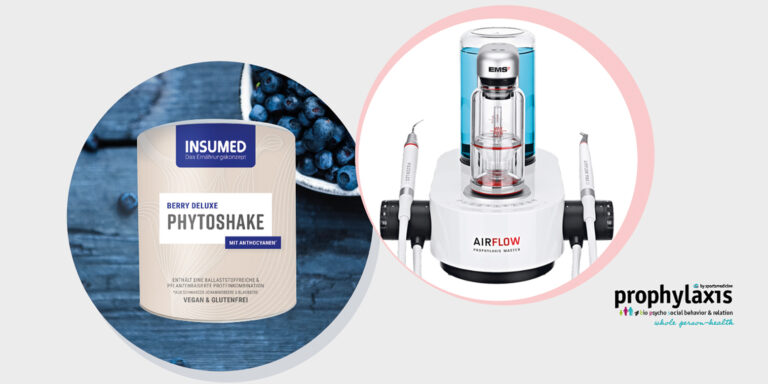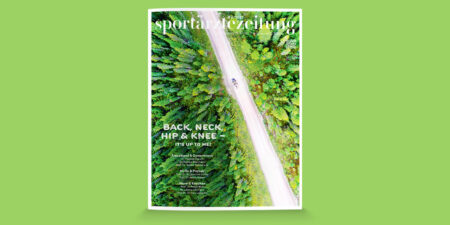Inflammatory conditions of the oral cavity, such as gingivitis and periodontitis, are widespread and can lead to tooth loss in the long term. In addition to professional tooth cleaning, natural anti-inflammatory substances such as anthocyanins, boswellia, turmeric and bromelain are becoming increasingly important. Thanks to their anti-inflammatory, antioxidant and antibacterial properties, they can promote oral health and support the healing of gum disease.
Natural anti-inflammatories in the oral cavity: anthocyanins, boswellia, turmeric and bromelain
Inflammatory conditions of the oral cavity, particularly gingivitis and periodontitis, are caused by bacterial infection and immunological reactions. Natural active ingredients such as anthocyanins, boswellia, turmeric and bromelain show promising anti-inflammatory, antioxidant and antibacterial properties that could offer a complementary treatment strategy.
Anthocyanins Strong antioxidants with anti-inflammatory properties
Anthocyanins belong to the group of flavonoids and are found in dark-coloured fruits such as blueberries, blackcurrants, grapes and red cabbage. They have a dual protective function:
Mechanisms of Action
- Antioxidant effect: anthocyanins neutralise free radicals and reduce oxidative stress, which plays a significant role in inflammatory processes in the gums [1].
- Inhibition of pro-inflammatory enzymes: They block cyclooxygenase (COX) and lipoxygenase (LOX), which are involved in the synthesis of pro-inflammatory prostaglandins [2].
- Inhibition of pro-inflammatory enzymes: They block cyclooxygenase (COX) and lipoxygenase (LOX), which are involved in the synthesis of pro-inflammatory prostaglandins [2].
- Promoting wound healing: By modulating inflammatory signalling pathways, anthocyanins can contribute to gum regeneration [4].
Blueberries instead of tooth cleaning
It was shown that a daily intake of 500 g of blueberries can significantly reduce gingivitis. Remarkably, the observed reduction in gingival bleeding was even greater than the effect of professional tooth cleaning and could no longer be explained by the ‘Hawthorne effect’. These results indicate that blueberries have pronounced anti-inflammatory properties that can significantly improve oral health, either alone or in combination with other oral hygiene measures.
Widén C. et al. (2015) Consumption of bilberries controls gingival inflammation. Int J Mol Sci.
Boswellia (frankincense) Inhibition of Inflammatory Mediators
Boswellic acids are the active ingredients of frankincense (Boswellia serrata), which regulate inflammatory processes through various mechanisms.
Mechanisms of Action
- Inhibition of 5-lipoxygenase (5-LOX): This inhibits the production of leukotrienes, which play a central role in the inflammation of the oral mucosa [5].
- Blocking prostaglandin E2 (PGE2): Boswellia acids inhibit the synthesis of this messenger substance, which is involved in pain and inflammatory reactions [6].
- Antibacterial effect: incense is effective against oral pathogens such as Streptococcus mutans and Fusobacterium nucleatum [7].
- Promotes wound healing: The anti-inflammatory properties contribute to the regeneration of damaged tissue [8].
Turmeric (curcumin) Natural anti-inflammatory and antiseptic
Curcumin, the main active ingredient in turmeric (Curcuma longa), has strong anti-inflammatory and antibacterial properties.
In a comprehensive review, it has already been shown on the basis of selected animal studies and randomised clinical studies that turmeric can reduce the following dental parameters: gum pocket depth, periodontal pathogens, plaque and bleeding indices, and redness.
Forouzanfar F, et al. (2020) Curcumin for the Management of Periodontal Diseases: A Review. Curr Pharm Des.
Mechanisms of Action
- Inhibition of the NF-κB signalling pathway: This suppresses pro-inflammatory cytokines such as TNF-α and IL-6, which are responsible for periodontitis [9].
- Antibacterial effect: Curcumin inhibits the growth of pathogenic bacteria in the oral cavity, including P. gingivalis and T. denticola [10].
- Promotes tissue regeneration: Studies show that curcumin stimulates collagen production, thus improving gum healing [11].
- Reducing dental plaque: Studies have shown that mouthwashes containing curcumin have a comparable effect to chlorhexidine, but without the side effects such as tooth discolouration [12].
Bromelain Enzymatic support for wound healing
Bromelain is a proteolytic enzyme found in pineapples that has anti-inflammatory, decongestant and woundhealing properties.
Mechanisms of Action
- Proteolytic effect: Bromelain breaks down inflammatory protein deposits and thus promotes healing [13].
- Improvement of blood circulation: It reduces swelling and increases microcirculation, which accelerates the removal of inflammatory substances [14].
- Antithrombotic properties: Bromelain dissolves fibrin clots, which can occur, for example, after dental surgery or
inflammation [15]. - Analgesic effect: It inhibits pain-mediating substances such as bradykinin [16].
These agents provide scientifically based support for oral health and could be effective adjuncts to conventional periodontal therapy.
Integration of natural active ingredients into a GBT protocol
Guided Biofilm Therapy (GBT) from EMS is a scientifically based, minimally invasive protocol for professional tooth cleaning that effectively removes biofilm and tartar. In combination with anti-inflammatory therapy, it offers an innovative approach to sustainable oral health.
- Diagnosis & education Examination for inflammation and recommendation of an anti-inflammatory diet.
- Staining of the biofilm Visualisation for targeted cleaning, control of inflammatory areas.
- Patient instruction Tips for oral hygiene, integration of anthocyanins, boswellia, turmeric and bromelain, among other things, into the diet.
- Airflow® cleaning Removal of biofilm with gentle powder jet technology, supported by anti-inflammatory agents.
- Perioflow® treatment Cleaning of deep periodontal pockets, supplemented by boswellia to reduce inflammation.
- Piezon® PS ultrasound Removal of calculus, while bromelain wound healing and blood flow.
- Re-evaluation Checking gum health and the effect of anti-inflammatory measures.
- Recall & aftercare Regular GBT sessions and continuous support from anti-inflammatory substances.
Benefits of combining GBT with anti-inflammatory therapy
- Effective biofilm removal Minimises the main cause of gum inflammation.
- Natural anti-inflammatory action Supports the healing process with herbal ingredients.
- Gentle and painless Reduces discomfort and improves tolerability.
- Long-term oral health Strengthens the gums and prevents periodontitis.
- Scientifically based synergy Combines modern dentistry with natural healing methods.
Conclusion
The combination of Guided Biofilm Therapy and targeted anti-inflammatory therapy offers a holistic solution for promoting oral health. While GBT optimises the mechanical removal of biofilm and tartar, natural active ingredients have an anti-inflammatory effect and promote regeneration. This approach could enable gentle but effective prevention and treatment of gum disease – with the potential to contribute to long-term oral health.
The protein plus
Proteins and periodontal disease
Proteins also have a positive effect on periodontal health. Studies have shown an inverse correlation between protein intake and the incidence of periodontitis [17, 18]. The gingival tissue has one of the highest turnover rates in the body, and proteins are crucial for its structural maintenance. Severe protein deficiency results in tooth loss and periodontal lesions [19]. Insufficient protein intake negatively impacts the immune system, wound healing and the antibacterial properties of saliva [20].
- https://sportaerztezeitung.com/rubriken/therapie/17225/ernaehrungszahnmedizin-prophylaxe/
- https://sportaerztezeitung.com/rubriken/therapie/15725/prophylaxe-therapie-der-modernen-sportzahnmedizin/
- https://sportaerztezeitung.com/rubriken/kardiologie/11294/schnittstellen-der-sport-und-zahnmedizin/
- https://sportaerztezeitung.com/rubriken/kardiologie/9196/zahnmedizin-sportzahnmedizin-bedeutung-fuer-sportler/
Bibliography
[1] Tsuda, T. (2012). „Dietary anthocyanin-rich foods for the prevention of lifestyle-related diseases.“ Journal of Biomedicine and Biotechnology.
[2] Kong, J. M. et al. (2003). „Anthocyanins: structural characteristics and biological properties.“ The Journal of Phytochemistry.
[3] Lee, J. H. et al. (2020). „Effects of anthocyanin-rich extracts on periodontal bacteria.“ International Journal of Molecular Sciences.
[4] Khoo, H. E. et al. (2017). „Anthocyanidins and anthocyanins: beneficial effects and mechanisms of action.“ Oxidative Medicine and Cellular Longevity.
[5] Ammon, H. P. (2010). „Modulation of the immune system by Boswellia serrata.“ Planta Medica.
[6] Poeckel, D., & Werz, O. (2006). „Boswellic acids: biological actions and molecular targets.“ Current Medicinal Chemistry.
[7] Siddiqui, M. Z. (2011). „Boswellia serrata: A potential anti-inflammatory agent.“ Indian Journal of Pharmaceutical Sciences.
[8] Kimmatkar, N., et al. (2003). „Efficacy and tolerability of Boswellia serrata extract in treatment of osteoarthritis of knee.“ Phytomedicine.
[9] Gupta, S. C. et al. (2013). „Curcumin: an orally bioavailable blocker of TNF and other pro-inflammatory biomarkers.“ British Journal of Pharmacology.
[10] Nagpal, M., & Sood, S. (2013). „Role of curcumin in systemic and oral health: An overview.“ Journal of Natural Science, Biology, and Medicine.
[11] Elburki, M. S., et al. (2017). „Curcumin reduces inflammation and bone loss associated with periodontitis in rat models.“ Journal of Clinical Periodontology.
[12] Mali, A. M., et al. (2012). „Comparative evaluation of turmeric and chlorhexidine mouthwash in prevention of plaque formation.“ Journal of Indian Society of Periodontology.
[13] Bhattacharyya, B. K. (2008). „Bromelain: an overview.“ Natural Product Radiance.
[14] Maurer, H. R. (2001). „Bromelain: biochemistry, pharmacology, and medical use.“ Cellular and Molecular Life Sciences.
[15] Fitzhugh, D. J., et al. (2008). „Bromelain treatment reduces neutrophil migration.“ Clinical Immunology.
[16] Secor, E. R., et al. (2005). „Bromelain exerts anti-inflammatory effects via modulation of T cells.“ Clinical Immunology.
[17] Al-Zahrani, M.S. Increased intake of dairy products is related to lower periodontitis prevalence. J. Periodontol. 2006, 77, 289–294.
[18] Adegboye, A.R.; Boucher, B.J.; Kongstad, J.; Fiehn, N.; Christensen, L.B.; Heitmann, B.L. Calcium, vitamin D, casein and whey protein intakes and periodontitis among Danish adults. Public Health Nutr. 2016, 19, 503–510.
[19] Shimazaki, Y.; Shirota, T.; Uchida, K.; Yonemoto, K.; Kiyohara, Y.; Iida, M.; Saito, T.; Yamashita, Y. Intake of dairy products and periodontal disease: The Hisayama Study. J. Periodontol. 2008, 79, 131–137.
[20] Hujoel, P.P.; Lingström, P. Nutrition, dental caries, and periodontal disease: A narrative review. J. Clin. Periodontol. 2017, 44, S79 – S84.
Autoren
absolvierte ein Studium der Zahnheilkunde in Frankfurt am Main. 2003–2006 wiss. Mitarbeiter, Poliklinik für Parodontologie des Universitätsklinikums Ffm. Seit 2009 niedergelassen in eigener Praxis in Darmstadt. Seit 2008 ist er Tutor/Dozent des Studiengangs „Master Parodontologie und Implantattherapie“, Universitätsklinikum für Zahn, Mund und Kieferheilkunde, Freiburg. Außerdem ist Dr. Roßberg wiss. Beirat der sportärztezeitung.




